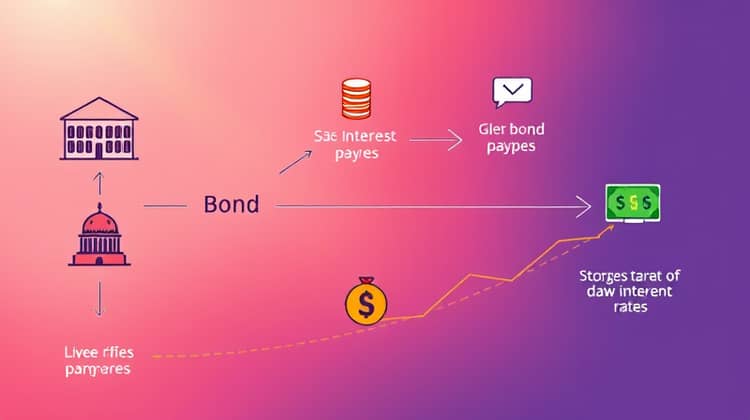Investing can be a complex and intimidating journey, especially for newcomers trying to navigate the various options available. Among the most popular investment choices are stocks and bonds, two pillars of the financial world. Understanding the differences between these instruments is crucial for making informed investment decisions.
Stocks and bonds each serve distinct roles in the investment landscape and come with their unique characteristics, advantages, and risks. This article delves into the nature of stocks and bonds, exploring their respective attributes, and offering insights that can help you choose the right investment strategy for your financial goals.
By comparing stocks and bonds, you can gain a clearer understanding of how they function, their potential returns, and how they align with your overall investment strategy. Let’s dive deeper into each type of investment to uncover their intricacies.
The Nature of Stocks and Bonds

Stocks and bonds are both important investment vehicles commonly used by individuals and institutions alike. Understanding their nature helps investors make wiser choices based on their financial goals and risk tolerance.
At their core, stocks represent ownership in a company, while bonds are essentially loans made to an entity, whether it be a corporation or government. Differentiating these two can significantly impact an investor's portfolio and overall strategy.
Stocks: Ownership in a Company

When you purchase a stock, you're buying a small share of ownership in a company. This grants you potential voting rights and eligibility for dividends, which can be a vital source of income.
Stocks are also known for their potential for growth; as a company performs well, the value of its stock can increase significantly, leading to capital gains for the shareholder.
- Stocks provide potential for higher returns compared to bonds.
- Shareholders can participate in company growth.
- Stocks are generally more volatile than bonds.
However, with higher potential returns comes higher risk, as stock prices can fluctuate widely based on market conditions, business performance, and investor sentiment.
Bonds: A Loan to an Entity

In contrast to buying stocks, purchasing a bond means you're lending money to an entity, which might be a corporation or government. In return, the issuer agrees to pay you interest over a specified period and return the principal at maturity.
Bonds are typically viewed as safer investments compared to stocks; they provide predictable returns and less volatility, making them an attractive option for conservative investors.
- Bonds typically offer fixed interest payments.
- They are considered lower risk compared to stocks.
- Bond prices can fluctuate based on interest rate changes.
Yet, investors should remain aware that while bonds are generally safer, they also come with their own risks, including interest rate and credit risk, which can affect bond prices and yields.
Risk and Return

Understanding the balance of risk and return is fundamental for any investment strategy. Stocks tend to be more volatile, offering higher potential returns but also greater risks of losing money.
On the other hand, bonds often offer lower, more stable returns with reduced risk, making them suitable for preserving capital, especially during economic downturns.
This relationship between risk and return is crucial for investors to consider when creating their portfolio allocations.
- Stocks can yield high returns, but also come with high risk.
- Bonds provide steady income with lower risk.
- The choice between stocks and bonds often depends on individual risk tolerance.
Ultimately, a well-balanced approach that includes both asset types may provide a satisfactory compromise between growth potential and risk management.
Liquidity

Liquidity refers to how easily an asset can be converted into cash without significantly affecting its price. Stocks are typically more liquid than bonds, meaning they can generally be bought and sold quickly on exchanges.
The liquidity of bonds varies widely, depending on the type of bond and market conditions. Government bonds, for instance, tend to be more liquid than corporate bonds.
- Stocks can be easily traded on stock exchanges.
- Bonds may have varying levels of liquidity based on market conditions.
- Liquidity is an essential factor to consider for short-term traders.
Understanding liquidity is essential for investors who may need quick access to their funds, particularly during volatile market conditions.
Diversification

Diversification involves spreading investments across various asset classes to reduce overall risk. Including both stocks and bonds in a portfolio can create a more balanced investment approach.
When stock market conditions are less favorable, bond performance may help offset some losses and stabilize portfolio returns.
- Investing in different sectors of stocks can enhance growth.
- Incorporating bonds can provide stability and income.
- A balanced portfolio can help manage risk effectively.
Overall, maintaining a diversified portfolio can help investors achieve a more consistent performance over time, aligning with both their investment goals and risk tolerance.
Time Horizon

An investor’s time horizon plays a critical role in deciding whether to invest in stocks or bonds. Individuals with a longer time horizon may choose to invest more heavily in stocks, allowing for potential growth over time despite short-term volatility.
Conversely, investors with shorter time horizons may prefer bonds to achieve more stable returns and reduce exposure to market fluctuations.
- Long-term investors can benefit from stock growth.
- Short-term investors may prefer bond stability.
- Aligning investments with time horizon is crucial for success.
Understanding your time horizon helps define your investment strategy and overall allocation between stocks and bonds.
Tax Implications

Tax considerations are also a significant factor when evaluating stocks and bonds. Stocks can be subject to capital gains tax, especially if sold for a profit within a year of purchase, while bond interest may be taxed as ordinary income.
Municipal bonds offer a tax advantage since the interest earned is often exempt from federal and sometimes state taxes, making them friendly options for high-income earners.
- Consider short-term vs. long-term capital gains tax.
- Look into tax-exempt bond options.
- Understand how investment returns will be taxed.
Being aware of tax implications can help investors strategize their portfolios to minimize their tax liabilities and maximize returns.
Conclusion

In conclusion, stocks and bonds present distinct options for investors, each with specific benefits, risks, and characteristics. As an investor, understanding these differences is crucial for making informed choices that align with your financial goals and risk tolerance.
Investors should evaluate their personal circumstances, including time horizon, liquidity needs, and tax implications, when deciding how to allocate their capital between these two asset classes.
Ultimately, a balanced investment strategy that includes both stocks and bonds may provide the foundation needed to build wealth and achieve financial security.














